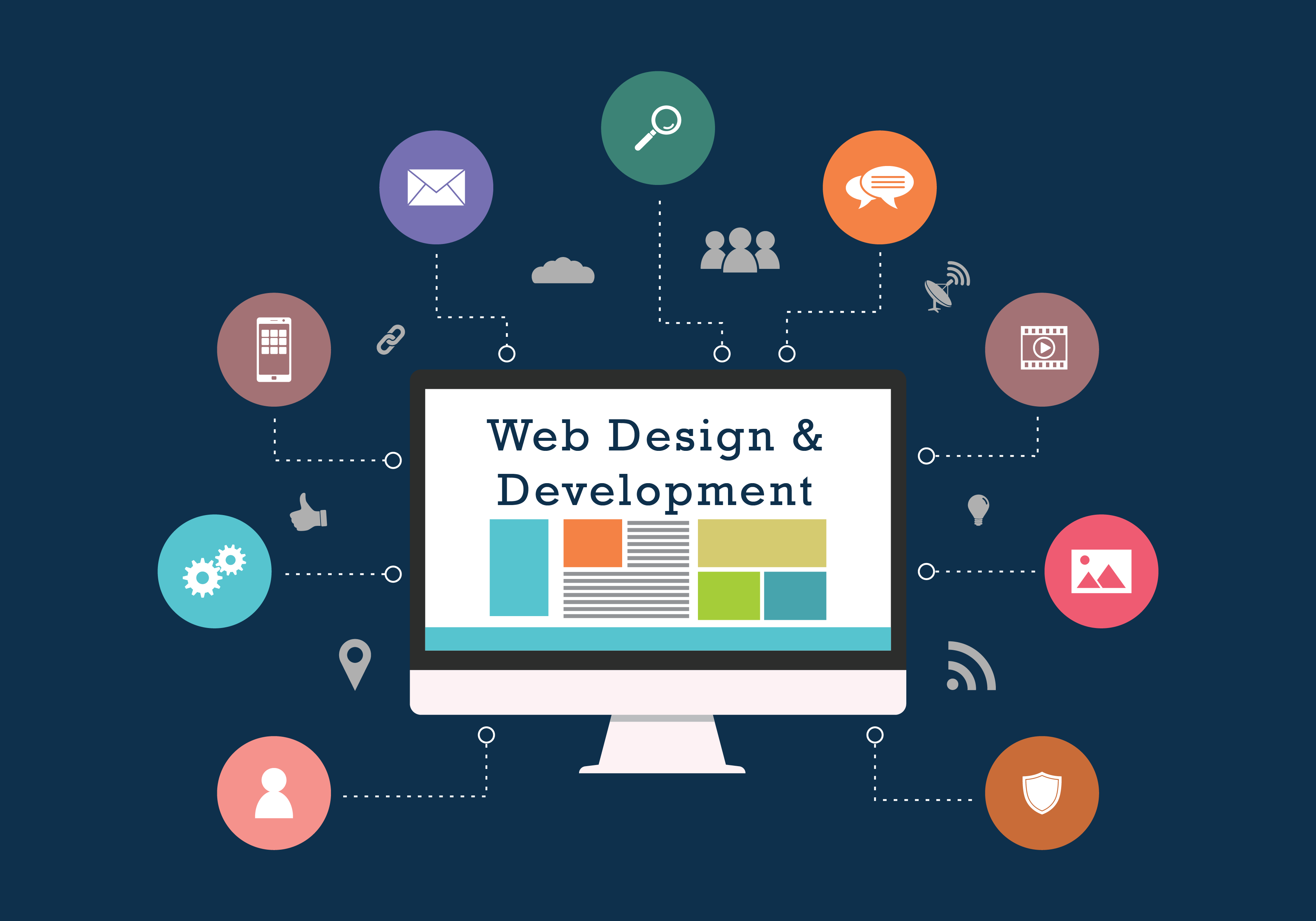Understanding the Importance of Website Design in Enhancing Customer Experience and Engagement
In the digital landscape, the importance of web layout in forming individual interactions can not be overstated. Recognizing exactly how internet layout influences individual experience and engagement is essential for organizations looking to stand out in a crowded on the internet environment.
Influence of Website Design on Customer Perception
When it involves the online world, web style plays an essential role in forming how users view a website and its material. The style components, layout, shades, fonts, and overall aesthetics of a web site all interact to produce an impression that can significantly impact customer assumption. A properly designed website not only attracts individuals yet also keeps them engaged and motivates them to discover further.
User perception is affected by numerous layout factors. For example, a clean and organized format conveys expertise and reliability, making individuals more likely to stay on the site. In addition, using ideal shades and font styles can stimulate certain feelings and boost readability, hence enhancing the overall customer experience. On the various other hand, a poorly designed web site with cluttered pages, perplexing navigation, or outdated visuals can deter individuals and lead to high bounce rates.

Elements of User-Friendly Design
Easy to use style is important for guaranteeing that site visitors can navigate an internet site conveniently, find the info they require quickly, and have an enjoyable experience. This consists of a clear food selection structure, quickly available links, and a search feature that aids users discover particular web content.
In addition to navigating and responsiveness, the use of white area can dramatically influence customer experience. White area helps to produce a tidy and uncluttered format, making it simpler for site visitors to concentrate on the material. Consistent branding, including using colors, typefaces, and images, also plays a crucial function in developing a cohesive and visually appealing layout that boosts user involvement.
Role of Visual Appeal in Engagement
The structure laid by straightforward style concepts, such as user-friendly navigation and responsive formats, establishes the phase for checking out the considerable impact of aesthetic charm on user engagement. Aesthetic allure plays an essential role in recording individuals' focus and maintaining them involved on an internet site.
Incorporating visually attractive elements not just enhances the user experience yet likewise influences customer behavior. Researches have revealed that individuals are more most likely to remain much longer on a site that is visually attractive compared to one that is obsolete or plain website design design (website design agency). Additionally, aesthetic appeal can assist share info more successfully, guiding individuals via the web content and triggering them to take wanted actions
Enhancing Navigation for Better Experience
Efficient navigating plays a critical role in boosting the general user experience of an internet site, guaranteeing smooth interaction and expedition for site visitors. A well-structured navigation system overviews individuals through the web site, assisting them find the details they seek promptly and effortlessly. Instinctive and clear navigation food selections, such as dropdown food selections, breadcrumbs, or search bars, boost individual experience by minimizing the moment and effort required to situate certain content.
Furthermore, executing responsive style principles in navigation permits for a consistent experience throughout various tools, catering to the differing needs of customers accessing online marketing branding the site from desktop computers, laptops, or smart phones. By maximizing navigation for mobile phones with touch-friendly components and simplified menu frameworks, designers can even more boost user engagement and satisfaction.
Additionally, including aesthetic hints like contrasting colors, float impacts, or computer animations can draw attention to crucial navigating elements, improving usability and assisting users via the website effectively. In general, focusing on navigating in website design causes boosted customer experience, raised engagement, and greater retention prices.
Conversions and Brand Name Loyalty Advantages
Enhancing a site's navigation not only boosts user experience but also contributes dramatically to promoting and improving conversions brand name loyalty. When customers can easily find what they are searching for on a site, they are much more most likely to engage with the content and ultimately transform, whether that implies making an acquisition, authorizing up for a newsletter, or completing a get in touch with kind. A well-structured navigating system guides users through the web site seamlessly, leading them to the desired activities and boosting the likelihood of conversion.
When users have a positive communication with a web site, they are a lot more likely to return in the future, recommend the website to others, and establish a feeling of depend index on and commitment towards the brand name. Investing in web style to enhance individual experience can have a direct impact on conversions and long-lasting brand loyalty.

Conclusion
Finally, the value of website design in boosting customer experience and involvement can not be overstated. By focusing on components such as user-friendly layout, aesthetic appeal, and navigating, internet sites can efficiently preserve and catch user interest. This eventually brings about raised conversions and brand loyalty. It is critical for companies to focus on website design as a way to enhance individual perception and total online success.
When it comes to the online world, web style plays an important duty in forming exactly how customers perceive a site and its web content. The style elements, design, shades, typefaces, and overall visual appeals of a website all work together to produce an initial impression that can substantially impact individual assumption. On the various other hand, a badly made website with messy pages, perplexing navigation, or out-of-date visuals can lead and deter users to high bounce prices.
Incorporating visually attractive aspects not only boosts the customer experience yet additionally affects user habits. website design. By focusing on elements such as user-friendly layout, visual appeal, and navigation, web sites can properly preserve and capture user rate of interest